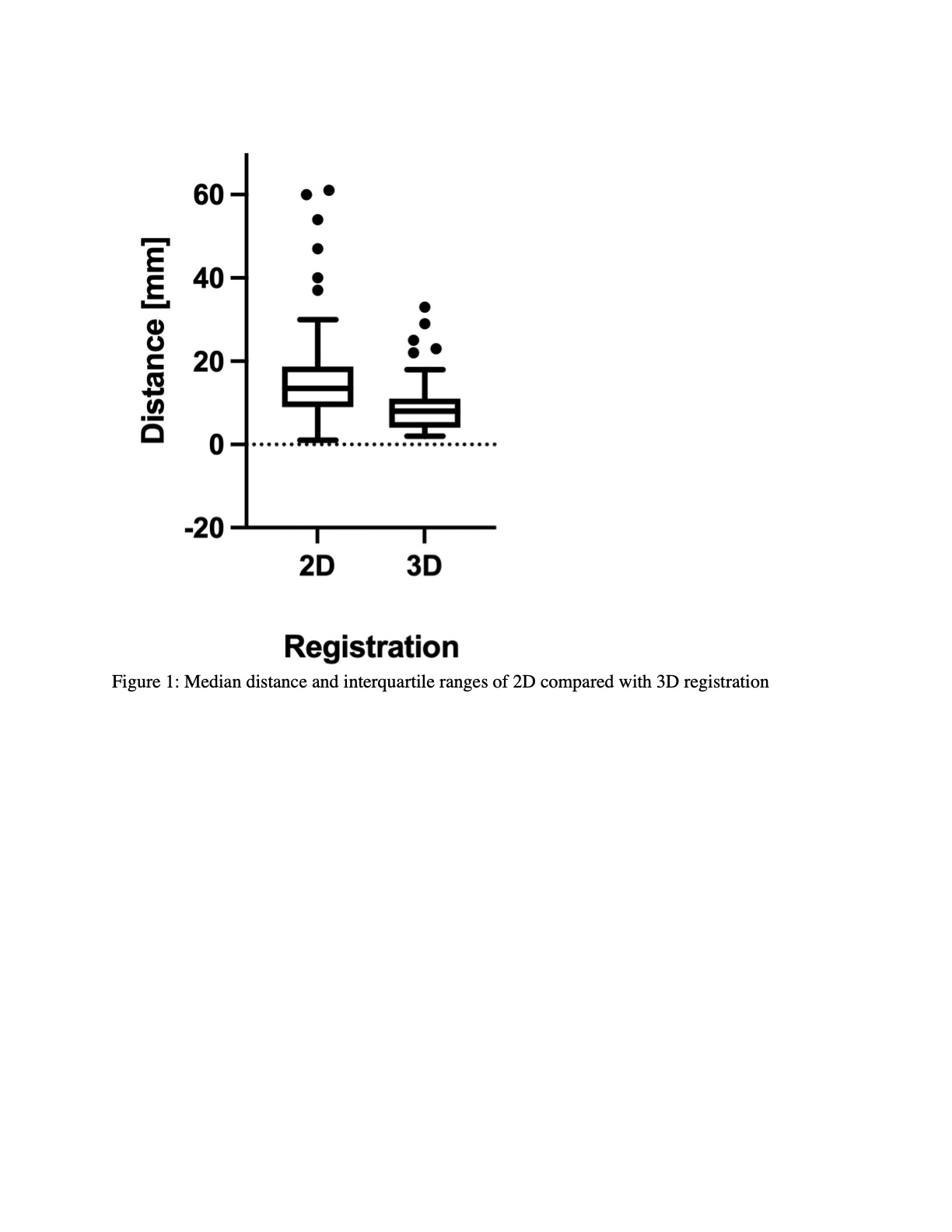Two Dimensional Versus Three Dimensional Registration For Image Fusion Technology
Kirsten D. Dansey, MD1, Nicholas J. Swerdlow, MD1, Thomas F.X O'Donnell, MD1, Sara L. Zettervall, MD2, Bertan Hallacoglu, PhD3, Marc L. Schermerhorn, MD1, Lars Stangenberg, MD1.
1Beth Israel Deaconess Medical Center, BOSTON, MA, USA, 2University of Washington, Seattle, WA, USA, 3Philips Healthcare, Boston, MA, USA.
OBJECTIVES: Image fusion technology allows for reduced operative time and radiation exposure during complex endovascular aortic operations. There are two approaches to register the preoperative CT scan to the patient; either using two x-ray images (2D) or using a cone beam CT (CBCT, 3D). The goal of this study was to compare the accuracy of initial mask alignment as well as the duration of mask creation for 2D versus 3D registration.
METHODS: We performed a retrospective analysis of patients who underwent EVAR at our institution. Offline, we used VesselNavigator technology (Philips Healthcare, Best Netherlands) to re-register the patientís preoperative CT scan to the images stored from the procedure. We used an anterior-posterior image and a lateral image to register for the 2D approach and used a CBCT for the 3D registration. We then used the patientís initial aortogram to measure the distance from the aortogram to the mask for both 2D and 3D registration. We chose the inferior angle between bilateral renal arteries and aorta as the fiducial markers. Furthermore we measured the time for the two registration processes. We then employed the Wilcoxon matched-pairs signed-rank test to compare the two populations.
RESULTS: A total of 27 patients were evaluated, 12 patients underwent EVAR, 9 FEVAR, 6 PMEG; 7 patients had a prior EVAR. The median (IQR) difference between the aortogram and the virtual mask for 3D registration was 8 (4,11) and for 2D was 14 (9,23), (p<0.001) figure 1. 22 (81%)patients had a more accurate registration with 3D image fusion. 2D fusion on average was faster by 88 seconds (p<0.001) where time to register was 107 seconds for 2D and 193 seconds for 3D registration CONCLUSIONS: 3D registration yields higher, unadjusted accuracy over the 2D registration, both in mean distances between aortogram and mask as well as frequency. This superior accuracy, is at the expense of a marginally longer registration time. Despite this added effort, we believe the 3D registration to be the preferred approach. 
Back to 2022 ePosters
